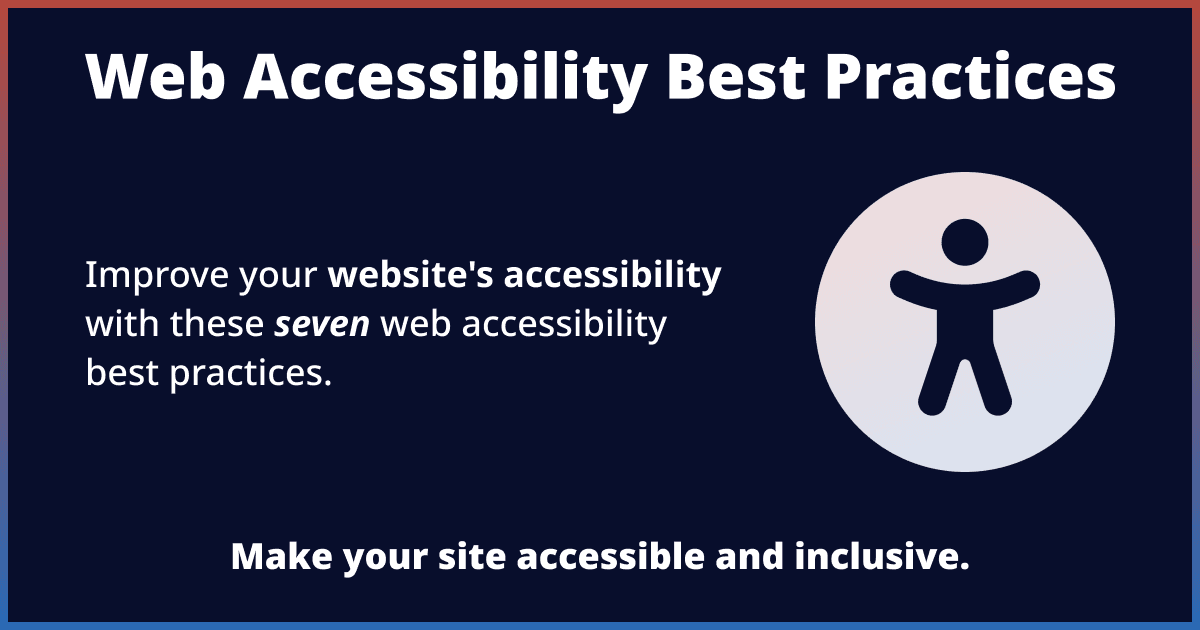Aixuze Insights
Explore the latest trends and insights on diverse topics.
Web Accessibility: Making the Internet Inclusive for All
Discover essential tips to make your website accessible for everyone and unlock the power of inclusivity on the internet!
Understanding the Principles of Web Accessibility: A Beginner's Guide
Web accessibility refers to the practice of making websites usable for all individuals, including those with disabilities. Understanding the principles of web accessibility is crucial for creating an inclusive online environment. The main focus of accessibility is to ensure that people with various disabilities can perceive, navigate, and interact with the web effectively. This is accomplished by following established guidelines, such as the Web Content Accessibility Guidelines (WCAG), which provide a structured approach to improving accessibility features.
To begin with, it's important to recognize the four core principles of web accessibility, often referred to as the P.O.U.R. principles:
- Perceivable: Information must be presented in ways that can be perceived by all users.
- Operable: Interfaces must be operable by keyboard or other assistive tools.
- Understandable: Content should be straightforward and navigable.
- Robust: Content must be compatible with a wide variety of user agents, including assistive technologies.

Common Barriers to Web Accessibility and How to Overcome Them
Web accessibility is essential for creating an inclusive online experience, yet many websites face common barriers to web accessibility. These barriers often stem from a lack of understanding of accessibility guidelines, insufficient technical knowledge, or simply ignoring the needs of users with disabilities. For instance, improperly structured headings, missing alternative text for images, and non-descriptive link text are frequent oversights that hinder usability for people using assistive technologies. Additionally, low contrast between text and background colors can make content difficult to read, posing a significant issue for individuals with visual impairments.
To overcome these common barriers to web accessibility, website owners should prioritize education and utilize accessible design practices. First, ensuring compliance with the Web Content Accessibility Guidelines (WCAG) is crucial. Implementing features such as text alternatives, keyboard navigation, and clear, consistent layouts can dramatically enhance user experience. Additionally, involving users with disabilities in testing phases not only helps identify specific issues but also promotes a user-centered approach to design. By actively addressing these challenges, businesses not only comply with legal standards but also expand their reach to a broader audience, ultimately fostering inclusivity and enhancing their brand reputation.
Why Web Accessibility Matters: The Impact on Users and Businesses
Web accessibility is crucial in today's digital landscape, ensuring that all users, regardless of their abilities or disabilities, can access and engage with online content. Approximately 15% of the world's population has some form of disability, which highlights the necessity for websites to be designed with inclusivity in mind. By implementing web accessibility features, businesses open their doors to a larger audience, increasing potential customer engagement and satisfaction. Furthermore, accessible websites often enhance user experience for everyone, as they tend to be more streamlined and easy to navigate.
The impact of web accessibility extends beyond user experience to touch the very success of businesses. Companies that prioritize accessibility are not only complying with legal standards but also enjoying a competitive edge in the marketplace. Research shows that organizations that embrace inclusive design see increased customer loyalty and improved brand reputation. Additionally, by optimizing for accessibility, businesses can reduce costs associated with redesigns and legal disputes, making web accessibility a smart investment for long-term growth.